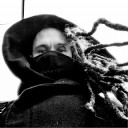@Transcend Ahh..... that is where the confusion arises. What is being read is individual samples.... at 44100Hz sample rate there are 44100 every second. The pitch is heard because of the rate at which they rise and fall in value.
In Pd a sine wave at 100 Hz would have a sample value of zero (maybe, it depends at what time the wave starts) at index 0, and then rising sample values to a value of 1 at sample number 110 (more or less) falling back to a sample value of 0 at sample 220, continuing to fall to -1 at sample 330 and then rising back to a value of zero at sample number 441....... etc. etc.
When those values are read by [tabread4~] the output would....... eventually, once it gets to your speakers..... push and pull the speaker smoothly 100 times a second, and be heard as 100Hz. Depending on the bit-depth of the dac the actual sample values later in the chain will be much larger, but Pd max/min values are +1/-1 at the output to the [dac~]. Your soundcard and Pd take care of that automatically.
If there is another sound, say at 1KHz., that would modulate that 100Hz wave..... it would look like a ripple on the 100Hz wave........ and so on. A music track will look a real mess when you look at it, with only loud / quiet parts really recognisable. But our ears, or more especially our brains, can make total sense of it.
Samplerate (audio) objects are used to set the indexes because they send a value at the samplerate...... so 44100 times a second...... so every single index is sent to [tabread4~]
Digital audio (FFT) is fiendishly complicated to understand, but this gets you quite a long way into it in only a few minutes........ https://medium.com/@djtech42/explanation-of-sample-rate-in-digital-audio-and-breakdown-of-misconceptions-38f912fb3b1f
Actually it gets you a very long way toward a good understanding in just a few minutes.......
David.



 )) wow!
)) wow!